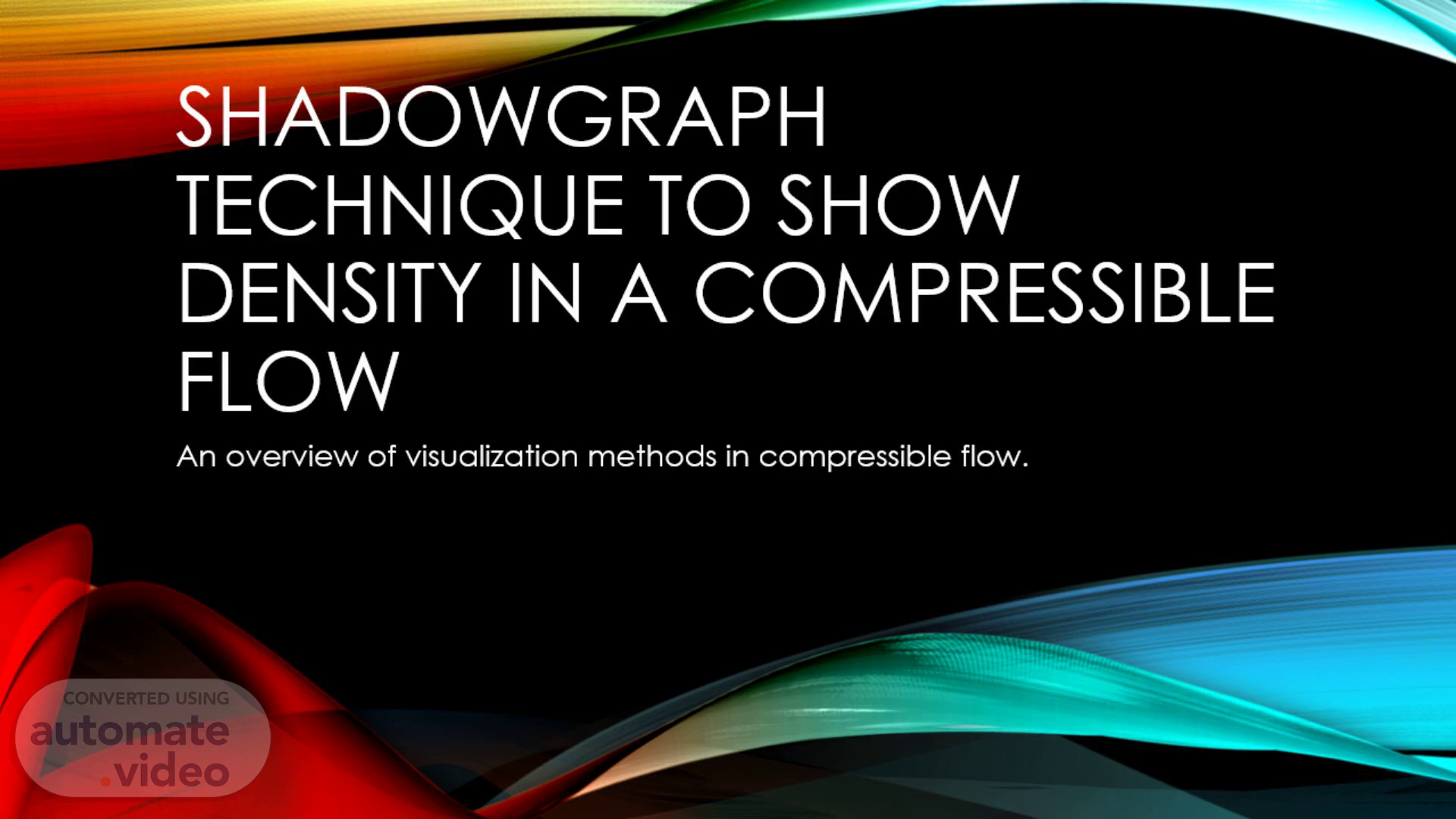
Shadowgraph Technique to Show Density in a Compressible Flow
Scene 1 (0s)
[Audio] Shadowgraph Technique to Show Density in a Compressible Flow An overview of visualization methods in compressible flow..
Scene 2 (10s)
[Audio] Introduction to Compressible Flow Compressible flow deals with gas dynamics where density changes. Occurs when Mach number is greater than 0.3. Important in high-speed aerodynamics. Density variations lead to pressure and temperature differences. Common in jet engines, rockets, and supersonic aircraft..
Scene 3 (35s)
[Audio] Visualization Techniques in Compressible Flow Several methods: Schlieren, Shadowgraph, and Interferometry. They highlight density gradients in flow. Key for understanding shock waves and expansion fans. Schlieren and Shadowgraph are non-intrusive techniques. Used to study supersonic and hypersonic flow..
Scene 4 (56s)
[Audio] Introduction to Shadowgraph Technique Shadowgraph visualizes changes in refractive index. Sensitive to density gradients in compressible flow. Simple setup with light source and recording screen. Allows visualization of shock waves, turbulence. Common in research on supersonic flows..
Scene 5 (1m 17s)
[Audio] How Shadowgraph Works Relies on light bending (refraction) through density gradients. A point source light illuminates the flow. Density variations cause different light deflections. Resulting shadows show variations in flow structures. Clear visualization of shock waves and expansion..
Scene 6 (1m 40s)
[Audio]
Scene 7 (1m 45s)
[Audio] Advantages of Shadowgraph Technique Non-intrusive, does not disturb the flow. Simple and cost-effective setup. Good for visualizing high-speed flows. Useful for visualizing shock wave patterns. Can capture large-scale flow phenomena..
Scene 8 (2m 7s)
[Audio] Applications in Compressible Flow Research Used in wind tunnels to study supersonic flows. Applied in hypersonic flow research for reentry vehicles. Key for studying shock wave-turbulence interactions. Important in aerospace propulsion systems. Helps in understanding complex flow phenomena..
Scene 9 (2m 27s)
[Audio] Shock Waves and Expansion Fans Shock waves are rapid changes in flow properties. Expansion fans occur in supersonic flow turning. Shadowgraph captures both phenomena effectively. Helps in visualizing Mach diamonds in jet exhaust. Critical in understanding high-speed aerodynamic flows..
Scene 10 (2m 49s)
[Audio] Schlieren vs Shadowgraph Both techniques visualize density gradients. Schlieren is more sensitive but more complex. Shadowgraph is simpler and easier to set up. Schlieren shows finer details of the flow. Shadowgraph is better for qualitative analysis..
Scene 11 (3m 8s)
[Audio] Requires a point light source (for example, laser or LED). A flow chamber to observe the compressible flow. A screen or camera to capture the shadowgraph image. Mirrors and lenses may enhance the image. Simple setups can be achieved with minimal equipment. Equipment Setup for Shadowgraph.
Scene 12 (3m 28s)
[Audio] Recent Advances in Shadowgraphy Digital shadowgraph techniques enhance clarity. 01 High-speed cameras allow for real-time visualization. 02 Laser-based systems for precise density measurements. 03 Advanced processing for 3D flow field reconstructions. 04 Improved for hypersonic and reentry vehicle testing. 05.
Scene 13 (3m 50s)
[Audio] Limitations of Shadowgraph Technique Less sensitive compared to Schlieren. Does not provide quantitative data. May not capture fine details in flow. Sensitive to alignment and light source quality. Not suitable for low-speed or incompressible flows..
Scene 14 (4m 7s)
[Audio] Conclusion Shadowgraph is a powerful tool for studying compressible flows. Helps visualize shock waves, turbulence, and other phenomena. Simple setup but provides valuable insights. Advances continue to improve its applications. Crucial for aerodynamic research and testing..